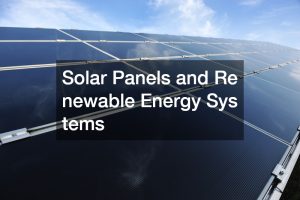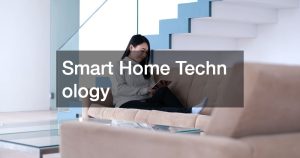Introduction
In recent years, sustainable design has become increasingly important for homeowners looking to reduce their environmental impact and create more energy-efficient homes. By integrating sustainable design elements, homeowners can significantly decrease their carbon footprints, lower utility costs, and increase property value. This guide will explore the top sustainable design elements for eco-friendly homes and provide practical advice on implementing these changes.
Overview of Sustainable Design
Sustainable design involves creating environments that are resource-efficient and ecologically responsible. For homeowners, integrating sustainable design elements is increasingly essential not only for reducing environmental footprints but also for achieving significant savings in utility costs. A sustainably designed home not only uses fewer resources but also increases its market appeal, thereby enhancing property value. As climate change awareness grows, homeowners are compelled to rethink traditional methods and adopt innovations that prioritize sustainability. Implementing these design principles in homes contributes to a healthier planet while ensuring financial benefits.
Why Sustainable Design Matters for Homeowners
- Energy Efficiency Benefits
Sustainable design significantly impacts energy consumption, making homes more efficient. By incorporating energy-efficient appliances and renewable energy technologies, homeowners can drastically cut their utility bills. Sustainable homes often employ airtight constructions and high-performance insulation, which help maintain consistent indoor temperatures. Through strategically placed windows and doors that optimize natural light and ventilation, less dependency on artificial lighting is required. As a result, homeowners can enjoy reduced energy costs over the long term, a critical factor in budget management. - Environmental Impact
The environmental benefits of sustainable design are profound, with a clear reduction in greenhouse gas emissions. By utilizing renewable energy sources, like solar and wind power, homes can significantly lower their carbon footprint. Additionally, sustainable materials often require less energy to produce and generate fewer VOCs, which improves indoor air quality. Environmentally conscious homes also promote resource conservation by minimizing waste and using water more efficiently. Reduced dependency on non-renewable resources translates into a healthier ecosystem and a better future for the planet. - Boost in Property Value
Homes with sustainable design elements are in higher demand, often commanding better resale prices compared to traditional properties. Buyers today are more informed and willing to invest in properties that promise long-term savings and environmental benefits. Sustainable features, such as energy-efficient windows and solar panels, enhance a home’s aesthetic appeal and functionality, making it a more attractive choice. An eco-friendly home stands out in the real estate market, offering both immediate savings and a desirable lifestyle shift for potential buyers. As sustainability trends continue to grow, these homes are set to rise further in value.
Top Sustainable Design Elements for Eco-Friendly Homes
1. Energy-Efficient Windows and Doors
Double and Triple Glazing
Energy-efficient windows and doors are crucial elements for reducing heat loss and improving overall insulation in a home. Double and triple glazing provide an additional layer of insulation, keeping interiors warm in winter and cool in summer. This technology minimizes the need for heating and cooling, thus lowering energy use and related costs. For homeowners, replacing old windows with modern, energy-efficient options can lead to noticeable savings on utility bills. Additionally, improved insulation leads to a more comfortable indoor environment year-round.
For more information, check out Energy-Efficient Windows.
2. Solar Panels and Renewable Energy Systems

Harness Solar Power
Solar panels are a quintessential element of sustainable design, providing a renewable energy source that reduces reliance on fossil fuels. By converting sunlight into electricity, these systems slash utility bills and offer attractive incentives like tax rebates. This makes solar energy not just an eco-friendly choice but also a financially smart one. Installing solar panels significantly decreases a home’s carbon footprint, contributing to global efforts against climate change. Moreover, as technology advances, solar panels become more efficient and accessible, making them a viable option for many homeowners.
Learn more about the benefits of solar panels at Solar Panel Benefits.
3. Eco-Friendly Insulation Materials
Recycled Insulation Materials
Eco-friendly insulation is another pivotal aspect of sustainable home design, offering energy conservation opportunities through innovative materials. Options such as recycled cotton, sheep wool, and cellulose are gaining popularity. These materials not only insulate effectively but are also sustainable due to their low environmental impact. Recycled insulation materials improve a home’s thermal performance while reflecting homeowners’ commitment to preserving natural resources. They also contribute to better indoor air quality by reducing the presence of harmful substances often found in conventional insulation products.
Discover more eco-friendly insulation options at Eco-Friendly Insulation Options.
4. Smart Home Technology

Energy Monitoring Systems
Smart home technology presents an efficient means of managing energy consumption and enhancing sustainability efforts. Automated systems, such as smart thermostats and energy-efficient lighting, allow homeowners to monitor and control energy use in real time. This technological innovation enables precise adjustments, optimizing efficiency and comfort by adjusting usage based on the time of day or occupancy. Furthermore, smart home systems can integrate with renewable energy sources, such as solar panels, to further lower carbon outputs. The convenience and savings provided by these systems underscore their increasing popularity among environmentally conscious homeowners.
For insights on smart home technology, visit Smart Home Technology.
5. Water-Efficient Plumbing Fixtures
Low-Flow Fixtures and Greywater Systems
Implementing water-efficient plumbing is an essential component of sustainable residential design. Low-flow faucets, toilets, and showerheads considerably reduce water usage without compromising performance. Greywater systems present another innovative approach, recycling water from sinks and showers for irrigation purposes. These changes not only lower water bills but also promote the preservation of valuable water resources. As water scarcity becomes a global concern, homeowners who adopt these fixtures demonstrate leadership in addressing sustainability challenges.
Learn more about water-efficient plumbing fixtures at Water-Efficient Plumbing.
6. Sustainable Roofing Materials
Cool Roofs and Green Roofs
Sustainable roofing materials are an innovative way to improve a home’s environmental performance and energy efficiency. Cool roofs are designed to reflect sunlight, reducing the need for air conditioning by keeping interiors cooler. Meanwhile, green roofs adorned with vegetation offer natural insulation and aid in stormwater management. Both options contribute to a reduction of urban heat island effects and enhance biodiversity within urban settings. These sustainable roofing solutions not only lower energy costs but also create beautiful, functional spaces that add value to the property.
Explore sustainable roofing options at Sustainable Roofing Options.
7. Recycled and Sustainable Building Materials
Recycled Steel and Bamboo Flooring
Selecting sustainable building materials plays a vital role in minimizing a home’s environmental impact. Materials like recycled steel, reclaimed wood, and bamboo are favored for their durability and low environmental footprint. Bamboo flooring, in particular, offers a renewable alternative, growing faster than traditional hardwood and thus ensuring resource replenishment. Recycled steel provides a robust framework, typically consuming fewer energy resources during its production compared to new steel. These materials, when incorporated into home design, reflect a conscious effort to integrate sustainability at the foundational level.
.Find out more about sustainable building materials at Sustainable Building Materials.
8. Energy-Efficient Lighting and Appliances
LED Lighting and Energy Star Appliances
The use of advanced lighting and appliances greatly contributes to reducing a home’s energy footprint. LED lights consume significantly less power and have longer lifespans compared to traditional bulbs. Energy Star-rated appliances undergo rigorous testing to ensure superior efficiency and cost-effectiveness. By investing in these technologies, homeowners can realize substantial electricity savings and support sustainable practices. Moreover, the enhanced performance and lower energy consumption of these products help mitigate environmental impact.
For more details on energy-efficient appliances, visit Energy-Efficient Appliances.
9. Sustainable Landscaping Practices
Native Plants and Xeriscaping
Sustainable landscaping goes beyond aesthetics, encompassing techniques that conserve water and support local ecosystems. Native plants require minimal irrigation and maintenance, adapting naturally to local climate conditions. Xeriscaping, which employs drought-tolerant species and permeable pavers, is a landscaping approach that significantly reduces water use. These practices foster biodiversity, lower maintenance costs, and improve the resilience of gardens to changing environmental conditions. By adopting these sustainable landscaping techniques, homeowners contribute to preserving nature while beautifying their surroundings.
Learn more about sustainable landscaping at Sustainable Landscaping.
10. Rainwater Harvesting Systems
Rainwater Collection for Irrigation
Rainwater harvesting systems present a sustainable method for reducing reliance on municipal water supplies. By collecting and storing rainwater, these systems provide an eco-friendly water source for garden irrigation and other non-drinking purposes. This practice not only reduces water bills but also supports a sustainable water management strategy. Rainwater harvesting reflects a proactive approach to resource conservation, offering both environmental and economic benefits. As water scarcity issues persist, these systems provide a practical solution aligned with sustainable home design principles.
Discover the benefits of rainwater harvesting systems at Rainwater Harvesting Systems.
How to Implement Sustainable Design in Your Home
Consult Professionals
To successfully incorporate sustainable design elements, consulting architects and contractors with expertise in green building is advisable. These professionals can offer technical insights and recommend suitable materials and technologies tailored to individual needs. Their knowledge ensures that sustainable features are integrated seamlessly into the home’s existing structure. With professional guidance, homeowners can navigate the complexities of sustainable design, ultimately achieving efficient and aesthetically pleasing results. Thus, enlisting the expertise of knowledgeable practitioners can be a wise investment for sustainable projects.
Take Small Steps
Starting with small changes makes the journey towards a sustainable home more manageable and less daunting. Simple tweaks, like switching to LED lighting or installing low-flow faucets, can have immediate effects on resource conservation and cost savings. Incremental changes allow homeowners to adapt without significant disruptions, building momentum towards broader sustainable practices. Over time, these modest shifts accumulate, leading to considerable environmental and financial benefits. This gradual approach empowers individuals to embrace sustainable living at their own pace.
The Long-Term Benefits of Sustainable Design for Homeowners
Cost Savings
One of the most compelling advantages of sustainable design is the promise of long-term cost savings. Efficient homes consistently use less energy and water, translating into reduced utility bills and direct financial relief. Over its lifespan, a sustainably designed house can produce substantial economic returns, justifying initial investments into energy-efficient technologies and materials. These savings add up, providing homeowners with more disposable income for other priorities. In cumulative terms, energy-efficient homes present a smart choice from both an environmental and financial perspective. For example, installing solar panels can drastically cut electricity bills, while energy-efficient windows reduce heating and cooling expenses.
Environmental Stewardship
Homeowners who adopt sustainable design elements play an active role in mitigating environmental impact and promoting stewardship. By choosing renewable energy sources, water-efficient systems, and eco-friendly materials, they help safeguard natural resources. This commitment to sustainability entails not just environmental responsibility but also a legacy for future generations. Through conscious home design, individuals contribute to a broader movement towards climate resilience and ecological harmony. Ultimately, sustainable living fosters a deep connection with the environment, instilling a sense of stewardship and collective responsibility.
Increased Property Value
Eco-friendly homes command enhanced market appeal, often resulting in higher resale values and quicker sales. As sustainability awareness grows, more buyers prioritize efficiency and environmental considerations. The increase in demand for carbon-conscious properties forecasts sustained appreciation of home values over time. Sellers can capitalize on these market trends by advertising the unique benefits of their green homes, attracting ecologically-minded buyers. Consequently, investing in sustainable home design not only brings immediate savings but also provides enduring value in the real estate landscape.
Conclusion
Start Today Encourage homeowners to take action and integrate sustainable design elements into their homes for a greener, more cost-efficient future. By making small changes and consulting with professionals, homeowners can contribute to environmental conservation and enjoy the long-term benefits of sustainable living.
With the growing importance of sustainability, homeowners can positively impact the environment while enhancing the comfort, efficiency, and value of their homes. Embracing sustainable design is a step toward a more sustainable and prosperous future.